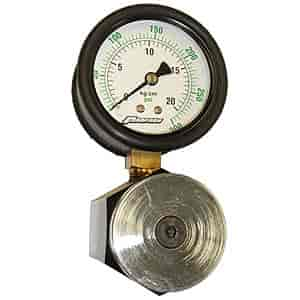Hi all,
Subject is a 1957 3E7 that is a daily driver. It works hard, hauling steel, aluminum and finished products for my machine shop.
I'm not really a CASO, except with time.
I have it in the shop while the snowy nonsense we have here in the winter welfare wonderland (Michigan) is in its full nastiness, preferring to sacrifice a Ford to the salt gods, but spring is nigh, and I miss my Indiana road oiler.
One of the winter maintenance and repair projects was new valve stem seals.
I am installing the pretty blue stem seals sold by Fairborn Studebaker. Judging from the smoke trail left last fall, it needed them.
Now lets talk about seated valve spring pressure, or namely the lack of it. I am relatively sure that you should not be able to slide the exhaust valve springs around when the valves are closed. I suspect we are all in agreement about this.
The truck has valve rotators, but they're supposed to turn, not slide.
So, the expeditious fix being considered for now is shimming the valve springs. This being a stopgap measure to keep the old reciprocator going until a set of heads can be properly rebuilt, or perhaps a complete spare engine ( for I am no stranger to the fact that removing cylinder heads can expose other dark, ugly things.
So, the question I put forth is: How much do I shim the springs? I know that the assembled height is 2.031, but measured from where?, and to what surface? The valves have obviously eaten into the head, but I can compensate for this by adding shims to make up for the difference between the stock height and what it is now.
The surprising thing is, it runs pretty well.
Thanks,
Jim
ps, I'm well into the Dragon's Milk, which is a splendid local brew which makes me more eloquent but not more intelligent, so your patience is appreciated
Subject is a 1957 3E7 that is a daily driver. It works hard, hauling steel, aluminum and finished products for my machine shop.
I'm not really a CASO, except with time.
I have it in the shop while the snowy nonsense we have here in the winter welfare wonderland (Michigan) is in its full nastiness, preferring to sacrifice a Ford to the salt gods, but spring is nigh, and I miss my Indiana road oiler.
One of the winter maintenance and repair projects was new valve stem seals.
I am installing the pretty blue stem seals sold by Fairborn Studebaker. Judging from the smoke trail left last fall, it needed them.
Now lets talk about seated valve spring pressure, or namely the lack of it. I am relatively sure that you should not be able to slide the exhaust valve springs around when the valves are closed. I suspect we are all in agreement about this.
The truck has valve rotators, but they're supposed to turn, not slide.
So, the expeditious fix being considered for now is shimming the valve springs. This being a stopgap measure to keep the old reciprocator going until a set of heads can be properly rebuilt, or perhaps a complete spare engine ( for I am no stranger to the fact that removing cylinder heads can expose other dark, ugly things.
So, the question I put forth is: How much do I shim the springs? I know that the assembled height is 2.031, but measured from where?, and to what surface? The valves have obviously eaten into the head, but I can compensate for this by adding shims to make up for the difference between the stock height and what it is now.
The surprising thing is, it runs pretty well.
Thanks,
Jim
ps, I'm well into the Dragon's Milk, which is a splendid local brew which makes me more eloquent but not more intelligent, so your patience is appreciated







Comment